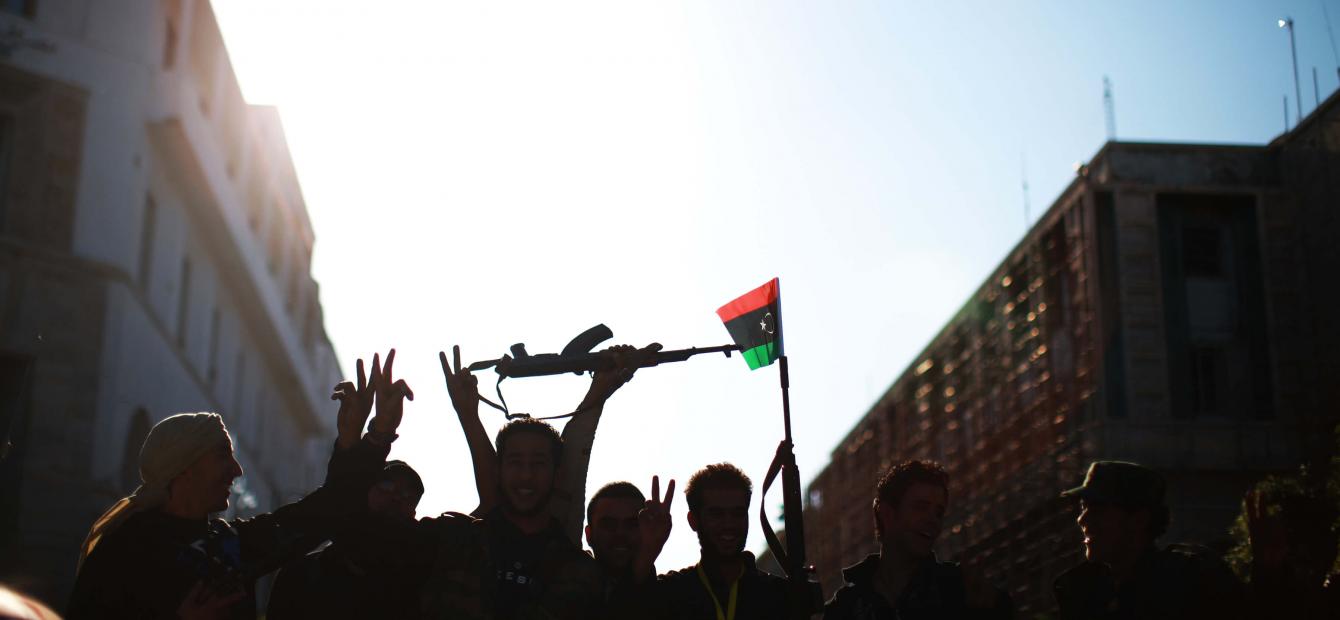
Libya’s broken revolution and the Western U-turn
Afghanistan, Syria, Libya and Mali have been hotbeds of conflict for years on end. The involvement of the West is analysed in this Clingendael Spectator series on Western interventions. From this perspective, the case of Libya has demonstrated a U-turn with far-reaching consequences.
Since the toppling and killing of Muammar Gaddafi in 2011, the high hopes of Libya becoming a stable, democratic state have not yet materialised. Instead, since 2014, the country has spiralled into a protracted conflict that, as of 2020, has not ended.
Since neither side is clearly stronger than the other, an – often low-intensity – civil war has carried on for years. In late 2019 and early 2020, international efforts to bring peace and stability to Libya culminated in the Berlin conference of 19 January 2020.1 Unfortunately, armed conflict on the ground has continued since.
The role of Western intervention in the case of Libya has turned out to be quite limited compared to Afghanistan or Iraq
This analysis will go into some of the root causes of Libya’s predicament by looking at three events in Libya’s recent history: [1] the February 2011 uprising that ended Gaddafi’s rule; [2] the 2014 bifurcation and the subsequent 2015 Libyan Political Agreement and [3] the attack of Khalifa Haftar on Tripoli, which began in April 2019.
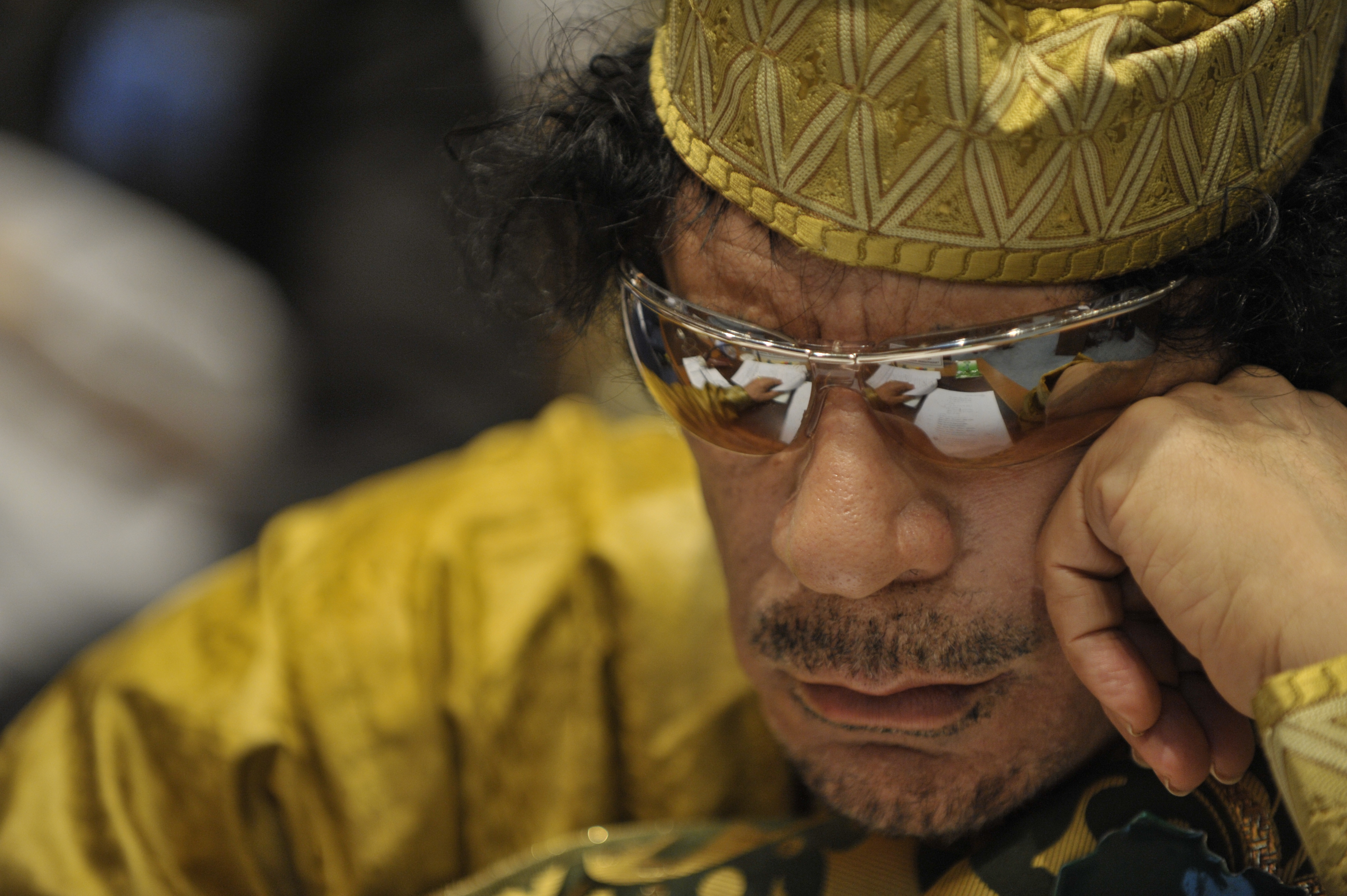
These events illustrate the complexity of the conflict in Libya, in which many domestic actors play a role. At the same time, they also highlight the divisiveness of international actors; many of whom are supporting the UN peacebuilding efforts, while at the same time exacerbating the situation on the ground by supporting domestic actors in the conflict. The role of Western intervention in the case of Libya has turned out to be quite limited compared to Afghanistan or Iraq.
From revolutionary fervour to international involvement
The uprising against Gaddafi started in the east of Libya, in Benghazi, 1000 kilometres from Tripoli, the centre of state power. However, within days, it spread to cities in the west as well. Gaddafi responded with excessive violence, pledging to cleanse the country from the revolutionaries, rats in his words, “inch by inch, house by house, home by home, alleyway by alleyway [zenga zenga], person by person”.2
The international community responded quickly through UN Security Council Resolution 1970, which was unanimously adopted by its members. In the resolution, the Security Council called for an immediate ending of the violence in Libya, and referred the gross violations by the regime to the International Criminal Court.3 It also called for an arms embargo.
On 17 March 2011, this resolution was followed by Resolution 1973, in which the Security Council called for an immediate ceasefire and the implementation of a no-fly zone. Moreover, the resolution allowed for military intervention to protect civilians.4 No members of the Security Council5 voted against the resolution, although five abstained from voting: Brazil, Germany, India, China and Russia.6
Forces loyal to Gaddafi fled the country, leaving a security vacuum behind
NATO supported the resolution and undertook military action to enforce it in ‘Operation Unified Protector’. France, together with the United Kingdom, took the lead in the military campaign.7 The mission ended not long after Gaddafi got captured in October 2011.8 Meanwhile, forces loyal to Gaddafi fled the country, leaving a security vacuum behind.9
Already in February 2011, prominent leaders of the revolution put a National Transitional Council (NTC) into place in Benghazi. The first international actor to recognise the NTC was France in March 2011.10 Other countries would quickly follow suit.11
The UN recognised the NTC as the official seat of power in Libya in September 2011 and UNSMIL, the United Nations Support Mission for Libya, was established on 16 September 2011 by Resolution 2009 to support the NTC. Its current mandate extends until September 2020.12
Bifurcation and the Libyan Political Agreement
In July 2012, the first general elections were held for a General National Congress (GNC), which took power in August 2012. A few months later a coalition cabinet of nationalist and Islamist parties under Prime Minister Ali Zeidan set out to govern and reconstruct Libya.
Gradually, the influence of Islamist-leaning revolutionaries on the GNC’s decision-making and the cabinet increased. The growing insecurity in the country, as well as growing dissatisfaction with the GNC, led to elections for a new parliament, the House of Representatives (HoR), in June 2014.13
In the months preceding the elections clashes erupted in the west of Libya, as a coalition of militias – mostly Islamist-leaning and Misrata based – that would be known as operation ‘Libya Dawn’ (Fajr Libya) occupied important places in Tripoli. They dispelled amongst others the militia from the town of Zintan, fellow revolutionaries, who until then had controlled the airport in Tripoli.
The success of Libya Dawn in the west had pushed Haftar to the east, where he planned to rid Benghazi – and then the whole country – of Islamist extremists
Ali Zeidan was forced to step down and fled the country. In the newly elected HoR Islamists were hardly represented. Hence the GNC, backed by Libya Dawn, refused to hand over power to its successor.14 The HoR then took refuge in the east, in Tobruk, and its executive branch or Interim Government in Al-Bayda.
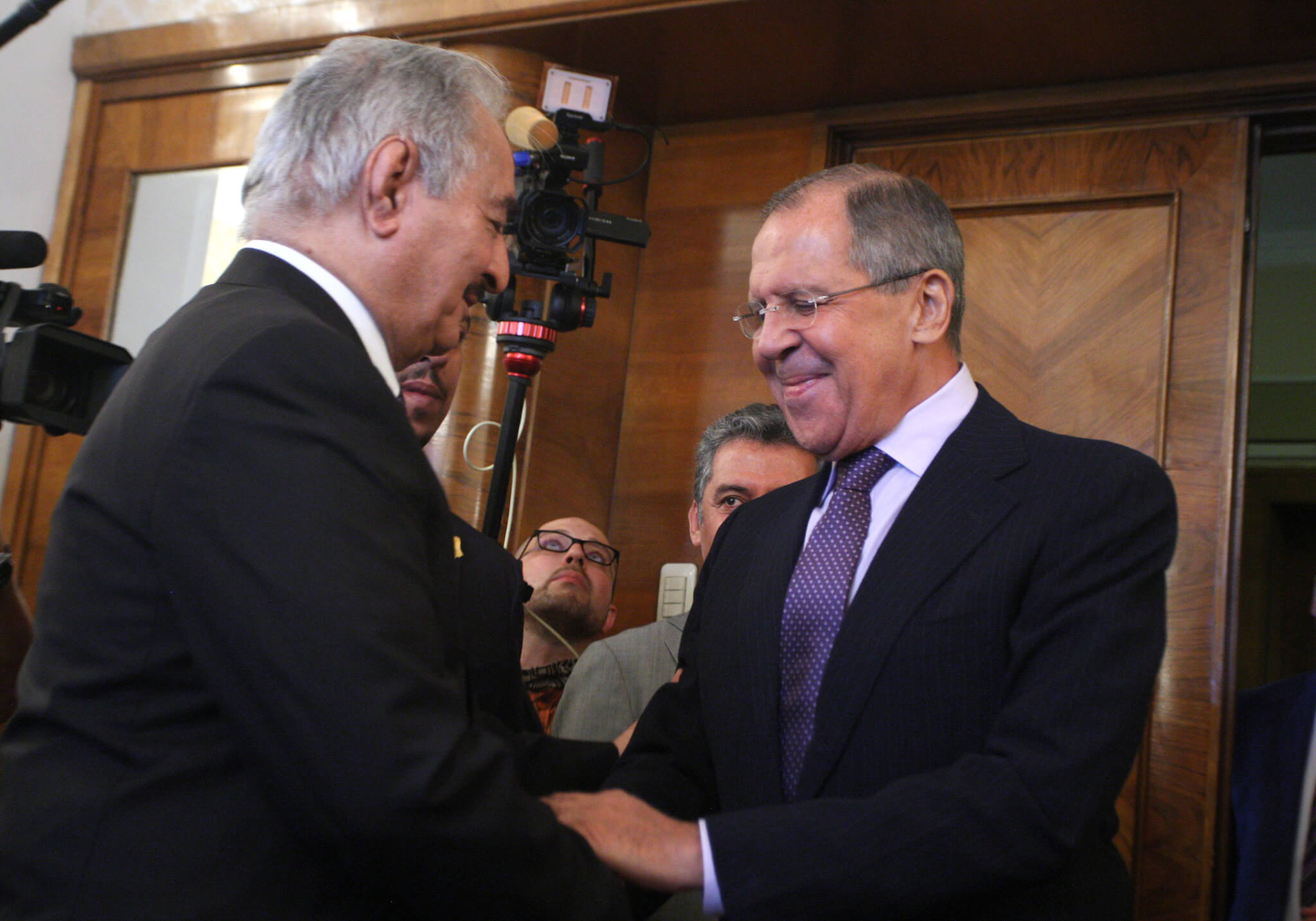
Meanwhile, Khalifa Haftar, a retired general of Gaddafi who had long been in exile, had started a military campaign to take power: ‘Operation Dignity’ (Karama). The success of Libya Dawn in the west had pushed Haftar to the east, where he planned to rid Benghazi – and then the whole country – of Islamist extremists. Over time Haftar would align himself with the HoR.
To bring the GNC and HoR camps together, extensive negotiations were brokered by UNSMIL. This led, in December 2015, to the signing of the Libyan Political Agreement (LPA) in Skhirat, Morocco.
Under the agreement a Presidency Council (PC) overseeing a Government of National Accord (GNA) would be formed as the executive body, a House of Representatives as the legislature body, and a High Council of State as a senate-like advisory body, consisting of members of the former GNC.15 From the outset the PC/GNA has been led by Fayez al-Serraj, as head of the Presidency Council.
It has been said that the negotiations empowered only those willing to work with UNSMIL, while those disagreeing on key aspects were left out
The process and outcome of the LPA have been criticised for several reasons, notably for a lack of inclusiveness. It has been said that the negotiations empowered only those willing to work with UNSMIL, while those disagreeing on key aspects were left out.16
For example, the negotiations were conducted mainly between GNC and HoR representatives17 , and left out important militia leaders.18 Those who signed the LPA were said to have a limited power base inside the country17 , and the LPA failed to reach broader local support.18
A main point of contestation within the GNC was the limited authority of the High Council of State19 , whereas the HoR side, notably Haftar himself, saw the military arrangements in the LPA, which would lead to civilian oversight over the army, as problematic.20 It therefore seems that even in the two bodies on whose behalf the agreement was signed, there was only limited support.
The process was also critiqued for being rushed, justified amongst others by the growing threat of Islamic State on Libyan territory.21 In the autumn of 2015, the head of UNSMIL at the time, Bernardino Léon, stepped down and was replaced by Martin Kobler, who helped pushing the LPA to completion.
Hence, the deal lacked broad domestic legitimacy, and the bifurcation therefore continued to exist. In December 2015, at the time of its enactment, the LPA had received broad formal support from the whole international community, including Algeria, Egypt, France, Germany, Italy, Qatar, Russia, Saudi Arabia, Tunisia, Turkey, United Arab Emirates, United Kingdom, USA, as well as the EU and UN.22
Their ambiguous positions would prove to be a pattern for years to come and hampered the effectiveness of peace efforts in Libya
Nevertheless, some of these actors have since provided vast military support to one of the Libyan sides, thus effectively sabotaging efforts to bring about peace. Their ambiguous positions would prove to be a pattern for years to come and hampered the effectiveness of peace efforts in Libya.
Some observers regard Operation Dignity as the birth of Haftar’s Libyan National Army (LNA), which has been able since to grow significantly in size.23 It now has a certain hold over a major part of the country, including its main oil fields.
This is not in the least because of military support by Egypt and the United Arab Emirates (UAE). Regional dynamics are important in understanding their involvement.
Egypt took a strong stance against Islamists after the toppling of Muhammed Mursi and the Muslim Brotherhood in Egypt in 2013. Haftar’s anti-Islamist narratives connect well to this.
The UAE – and Saudi Arabia – may have similar motives. Their support of Haftar may also be seen in light of their rivalry with Qatar, a supporter of the GNA government.
Most countries have given their political support to the GNA government, hence being more in line with the UN’s LPA-based strategy
Russia also started supporting Haftar, as did France apparently.24 The USA has been less involved and gave some mixed signals. Most countries, including the Maghreb countries and European countries, notably Italy, Turkey, Qatar, and still the USA, have given their political support to the GNA government, hence being more in line with the UN’s LPA-based strategy.
In 2017, the UN envoy and head of UNSMIL Ghassan Salamé launched a new Action Plan for Libya. Preparations were made throughout 2018 for a National Conference. Series of meetings with over 7,000 Libyans took place. Although there were criticisms about the selection of participants, by February/March 2019 the general expectation was that the National Conference was to be held within weeks.
The attack of Haftar on Tripoli in April 2019
Hopes for peace through such a National Conference were abruptly shattered when, on 4 April 2019, Haftar attacked Tripoli. This attack would prove to be a new turning point in the conflict in Libya, leading the country into yet another cycle of extended conflict.
The proliferation of arms and the many militia groups active on both sides have only exacerbated and deepened the conflict
Although Haftar appeared to expect a take-over of Tripoli in a few days25 , a full year later the armed struggle is still ongoing. Major casualties have occurred on both sides and thousands of people have been displaced. The proliferation of arms and the many militia groups active on both sides have only exacerbated and deepened the conflict.
The fight for Tripoli also saw the more overt involvement of some international actors in the conflict. To counterbalance the military support of Egypt and the UAE for Haftar, Turkey – a long-time supporter of the GNA government in Tripoli along-side Qatar – started sending troops to Libya in January 2020. Russia’s involvement also generated more attention, in particular the support of mercenaries of the Wagner Group for Haftar’s LNA.
The Berlin Conference
On 19 January 2020, Germany hosted the Berlin Conference aiming to support the UN in “unifying the international community in their support for a peaceful solution to the Libyan crisis”.26
The conference brought together a broad range of actors, including Serraj and Haftar, although the two did not communicate.27
Essentially, the Berlin conference was a get together of the international community, not of the Libyan parties. It followed mediation efforts by amongst others Russia and Turkey that led to a truce agreement between the two sides, which, however, continued to be broken.
The Berlin conference called for a more permanent ceasefire and an arms embargo. It also supported UNSMIL’s efforts to start three parallel tracks, i.e. military, political and economic/financial, to bring together the Libyan parties of the conflict. The former track is perhaps the most significant for reaching a ceasefire and implementing the arms embargo.
As part of the military track, a so-called ‘5+5 committee’ was put into place, for which both Haftar and Serraj selected five representatives. However, despite negotiations in Geneva in February 2020, they have not been able to ensure a more permanent ceasefire, and fighting has continued.28
While violations have been recognized both inside Libya and internationally, it seems individual countries lack true political will to unify their stances and stop the influx of weapons into the country
A key factor in this has been – once again – the continued international involvement in the conflict. Although the UN has urgently asked to enforce the arms embargo, international actors have continued to breach the agreement reached at the Berlin conference, with the UAE and Turkey now perhaps being the most overt sponsors of the two camps.29
While violations have been recognized both inside Libya and internationally, it seems individual countries lack true political will to unify their stances and stop the influx of weapons into the country.
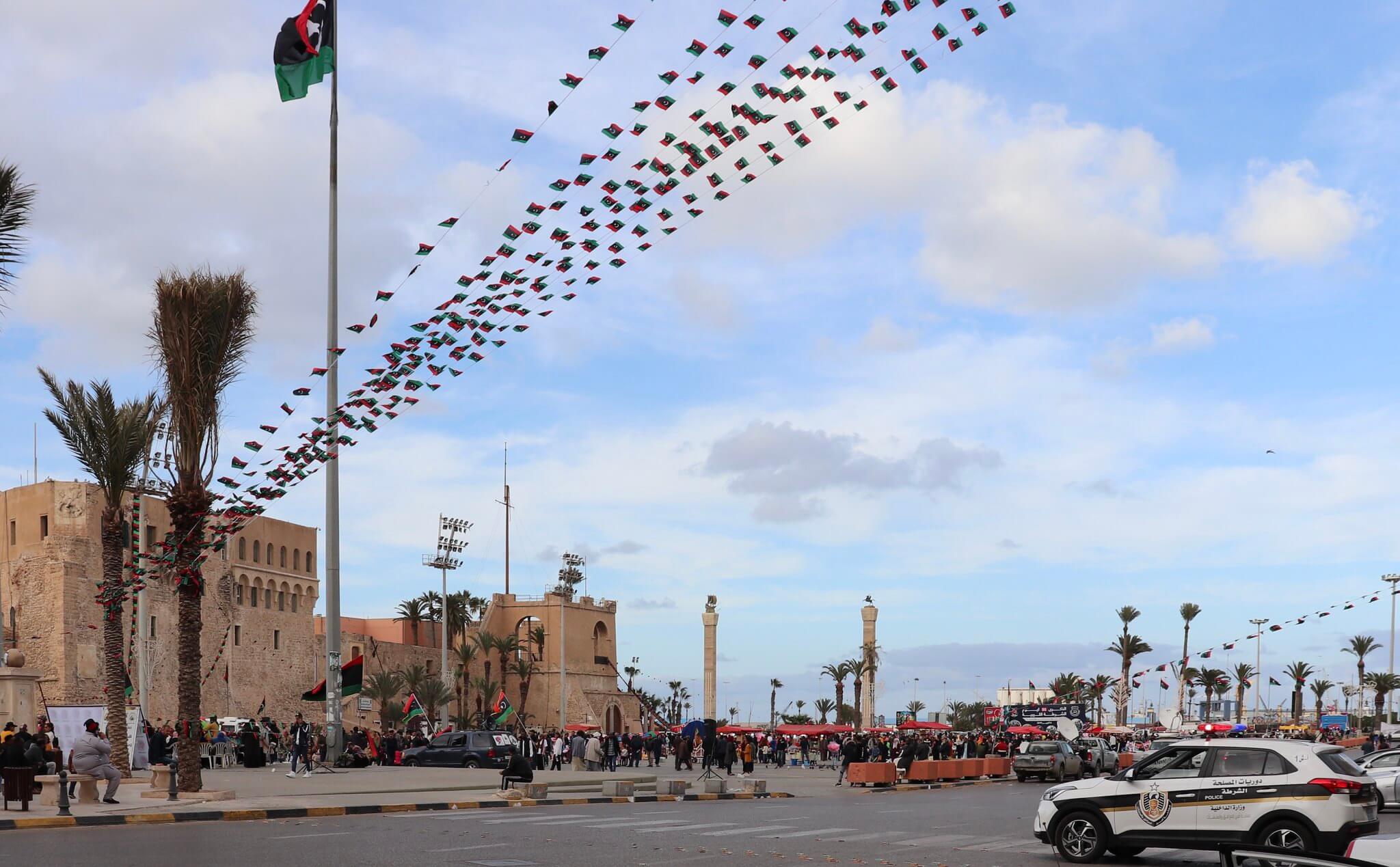
The impact of this has been severe. The negotiations stalled and fighting escalated once more. Whereas for a long time neither side was taking the overhand in the fight, since early 2020 the scale seems to have been tipping in favour of the GNA.
While the fighting continues, there are some signs of hope for Libya
This can mainly be explained by the larger and more explicit involvement of Turkey, whose support has allowed the GNA to start ‘Operation Peace Storm’ in March 2020.30 Strategic positions of Haftar’s LNA have been attacked and the GNA appears to have pushed the LNA out of western Libya.
Prospects for reconciliation
While the fighting continues, there are some signs of hope for Libya. In June 2020, it was announced that the 5+5 committee would resume its negotiations, with both sides expressing their willingness to return to the negotiation table. Moreover, the EU recently launched ‘Operation IRINI’, which aims to implement the UN arms embargo in the region.
However, for any solution to be successful, reconciliation efforts need to be inclusive of the many actors involved in the conflict in Libya. This means in the first place finding a broad support base for reconciliation efforts at the domestic level. The process should include not only politicians on both sides of the conflict, but also the main leaders of armed groups, and those traditional and religious leaders that are known to hold sway over armed groups.
Any effort seems bound to fail if international actors are not able to reach consensus on adhering to an arms embargo
At the same time, the above has also shown the involvement of many foreign actors. Their ambiguous roles and divisiveness are crucial factors in the current conflict. Any effort seems bound to fail if international actors are not able to reach consensus on adhering to an arms embargo.
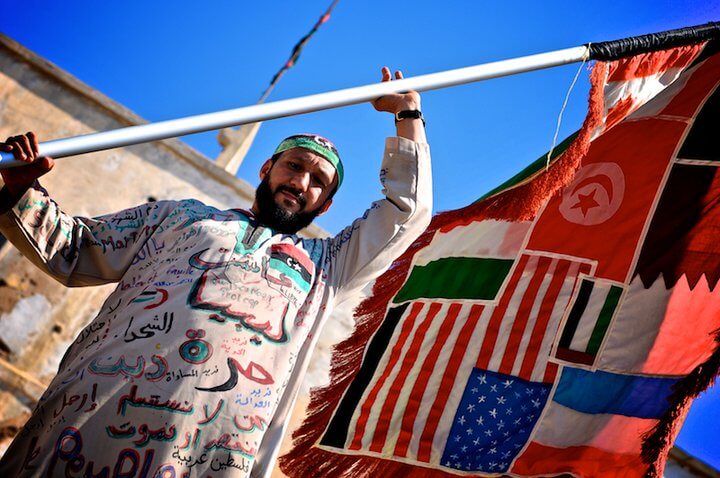
Despite being part of UN-led peace initiatives, and despite their claims that there can only be a political solution for Libya, several countries have not stopped their meddling, and seem to be lacking a genuine political will to stop the influx of arms into the country.
Perhaps a lack of trust that other parties will adhere to the embargo can partly explain this. The events presented above show how the 2011 arms embargo has been violated for years by these actors.
Attempts at a lasting cease-fire have failed so far, which does not increase trust in a viable and long-lasting solution
At the same time, the UN has so far not been able to stop this by effectively enforcing the embargo through sanctions or military power. Moreover, attempts at a lasting cease-fire have failed so far. This does not increase trust in a viable and long-lasting solution.
Will Operation IRINI be able to enforce the embargo? It seems unlikely for now that it will do so fully and effectively. The operation has been criticised, most notably because of its scope. As a predominantly naval campaign, it is said to disproportionally affect the GNA side, that receives its arms mainly by sea, from Turkey. Because the LNA receives its support mainly by land – through Egypt – and air, it will likely be much less affected.
At the same time, there are already signs that some countries may not wish to support the mission. Russia expressed doubts from the start about the effectiveness of IRINI, and expressed a need to carefully assess its adherence to the UN mandate.31
Perhaps more worrying is a recent incident in which a Greek vessel that was part of Operation IRINI was prevented by Turkey from inspecting a vessel suspected of carrying arms to the GNA government.32 The EU has now asked NATO for help to enforce the embargo.33
U-turn in Western interventions
From a perspective of Western interventions, the case of Libya has demonstrated a U-turn. Whereas in 2011 the West crucially contributed to the course of events, today regional powers such as Turkey, Egypt, and the UAE take centre stage. In spite of the German efforts, it remains to be seen whether the West – as US and EU – will be able to contribute significantly to Libya’s stability.
One may wonder how many are still to come before a lasting peace and unification of the country can be reached
On 3 March 2020, Ghassan Salamé resigned from his position as head of UNSMIL and the UN Secretary General’s envoy to Libya, stating that his health no longer allowed him to deal with the level of stress involved in trying to unite Libya.34 He was the sixth envoy since the UN mission started in 2011.35
One may wonder how many are still to come before a lasting peace and unification of the country can be reached. While the willingness of domestic actors to return to the negotiation table is promising, it seems clear that as long as unified stances of the international community and genuine adherence to the agreed processes are not reached, a lasting peace in Libya seems only a distant prospect.
* The author wants to thank Jan Michiel Otto and Suliman Ibrahim for their valuable comments on earlier drafts of this article.
- 1The Berlin conference was organized as part of a plan presented by former UN envoy Ghassan Salamé, in his address to the UN Security Council. The plan consisted of three steps: [1] the declaration of a truce; [2] the organization of a high-level meeting of concerned countries to cement the cessation of hostilities, work together to enforce the arms embargo and to promote adherence to international humanitarian and human rights law by Libyan parties, and [3] a Libyan meeting with leading personalities from the entire country to agree on the way forward. See: UNSMIL, ‘Remarks of the SRSG Ghassan Salamé to the United Nations Security Council on the Situation in Libya’, 29 July 2019.
- 2See Gaddafi’s speech, 22 February 2011.
- 3United Nations Security Council, ‘Resolution 1970 (2011)’, 26 February 2011.
- 4United Nations Security Council, ‘Resolution 1973 (2011)’, 17 March 2011.
- 5For a complete list of members of the Security Council in 2011, see this page.
- 6United Nations Security Council, ‘Security Council Approves “No-Fly Zone” over Libya, Authorizing “All Necessary Measures” to Protect Civilians, by Vote of 10 in Favour with 5 Abstentions’, 17 March 2011.
- 7Lisa Anderson, ‘They Defeated Us All: International Interests, Local Politics, and Contested Sovereignty in Libya’, The Middle East Journal 71 (2), 2017, p. 240.
- 8See: NATO, ‘Nato and Libya’, 9 November 2015.
- 9See for example: Kim Sengupta, ‘In a Cloud of Dust and Rumours, Gaddafi Loyalists flee the Country’, The Independent, 7 September 2011.
- 10Alan Cowell and Steven Erlanger, ‘France Becomes First Country to Recognize Libyan Rebels’, The New York Times, 10 March 2011.
- 11Mark John and David Cutler, ‘Factbox: International recognition of Libya’s rebel movement’, Reuters, 22 August 2011.
- 12See: UNSMIL Mandate.
- 13See also: Suliman Ibrahim et al., The Role of Law in Libya’s National Reconciliation, Report on Phase 1: National Identity, Benghazi and Leiden: Centre for Law and Society Studies and Van Vollenhoven Institute, 2018, p. 20-21.
- 14See also: Lisa Watanabe, ‘UN Mediation in Libya: Peace Still a Distant Prospect’, CSS Analyses in Security Policy 246, 2019.
- 15The Libyan Political Agreement is available online in English.
- 16International Crisis Group, ‘The Libyan Political Agreement: Time for a Reset’, Middle East and North Africa Report 170, 2016, p. 1-2.
- 17 a b Wolfram Lacher, ‘Libya: The Gamble That Failed’, Mission Impossible? UN Mediation in Libya, Syria and Yemen. SWP Research Paper 8, 2018, p. 18.
- 18 a b Lisa Watanabe, ‘UN Mediation in Libya: Peace Still a Distant Prospect’, CSS Analyses in Security Policy 246, 2019, p. 3.
- 19International Crisis Group, ‘The Libyan Political Agreement: Time for a Reset’, Middle East and North Africa Report 170, 2016, p. 4.
- 20Lisa Anderson, ‘They Defeated Us All: International Interests, Local Politics, and Contested Sovereignty in Libya’, The Middle East Journal 71 (2), 2017, p. 245-246.
- 21International Crisis Group, ‘The Libyan Political Agreement: Time for a Reset’, Middle East and North Africa Report 170, 2016, p. 5-8; Lisa Anderson, ‘They Defeated Us All: International Interests, Local Politics, and Contested Sovereignty in Libya’, The Middle East Journal 71 (2), 2017, p. 245-246; Lisa Watanabe, ‘UN Mediation in Libya: Peace Still a Distant Prospect’, CSS Analyses in Security Policy 246, 2019, p. 3; Wolfram Lacher, ‘Libya: The Gamble That Failed’, Mission Impossible? UN Mediation in Libya, Syria and Yemen. SWP Research Paper 8, 2018, p. 23.
- 22See: ‘Ministerial Meeting for Libya – Joint Communique (Rome, Italy – 13.12.2015)’.
- 23Jalal Harchaoui and Mohamed-Eassaïd Lazib. 2019. ‘Proxy War Dynamics in Libya’, PWP Conflict Studies, The Proxy Wars Project, 2019, p. 5.
- 24Lisa Watanabe, ‘UN Mediation in Libya: Peace Still a Distant Prospect’, CSS Analyses in Security Policy 246, 2019, p. 2.
- 25See e.g. Ulf Laessig, ’How Libya’s Haftar blindsided world powers with advance on Tripoli’, Reuters, 2019.
- 26See point 5 of ‘The Berlin Conference on Libya: Conference Conclusions’, Press Release by the Press and Information Office of the Federal Government of Germany, no. 31.
- 27Among the participants were those who played a major role in the conflict, including France, Russia, Egypt, Turkey and the UAE. At the same time, some important players, most notably Qatar were not participating. Saudi Arabia was also absent. This was despite calls by both the GNA and Turkey to include them. Direct neighbor Tunisia, moreover, was invited at the very last moment and had to decline the invitation.
- 28On March 18 and 21, as the global fight against the Corona virus intensified, UNSMIL stated that its appeal to both sides to accept a humanitarian cease fire for reasons of public health, was accepted. See here.
- 29The embargo violations have been recognized both inside Libya and by the international community. UNSMIL, e.g., in a press release on 25 January 2020, followed by a speech of Ghassan Salamé to the Security Council, criticized the ongoing transfer of foreign fighters, weapons, ammunition and advanced systems by several of those who participated in the Berlin Conference. Stephanie Williams, moreover, has called the embargo a ´joke´, due to the extent that it has been violated. In Libya as well, the violations have been criticized. Fathi Bashagha, GNA Minister of Interior, for example, openly blamed the UAE, Egypt, and Jordan for breaking the embargo, and criticized the presence of Russian mercenaries. Turkey, as well, has been blamed for supporting the GNA, despite the embargo. See: ‘UNSMIL Statement on Continued Violations of Arms Embargo in Libya’; John Irish and Sabine Siebold, ‘U.N. says Libya Arms Embargo a “joke”, demands accountability’, Reuters, 16 February 2020; Patrick Wintour, ‘UN too scared to stop the Breaches of Arms Ban, says Libyan Minister’, The Guardian, 13 March 2020.
- 30Abdulkader Assad, ‘Al-Serraj: Operation Peace Storm Launched to Respond to Militias’ Attacks on Civilians’, Libya Observer, 26 March 2020.
- 31Ministry of Foreign Affairs of the Russian Federation, ‘Comment by the Information and Press Department of the Russian MFA on the Launch of Military Operation “Irini” by the European Union’, 4 April 2020; Safa Alharathy, ‘Russia reiterates position on EU “IRINI”, insists should be compatible with UN resolution’, Libya Observer, 9 April 2020.
- 32Ragip Soylu, ‘Drama on the Med: Greek Navy Tries to Stop Cargo Ship Accompanied by Turkish Frigates’, Middle East Eye, 10 June 2020.
- 33‘Turkey flexes muscle in Mediterranean while EU tries to de-escalate tensions: Turkish forces conduct exercise in Libya’s territorial waters, plan bases’, The Arab Weekly, 13 June 2020.
- 34Sami Zaptia, ‘UNSMIL head Ghassan Salame tenders his resignation’, Libya Herald, 2 March 2020.
- 35His predecessors were: Martin Kobler (2015-2017), Bernardo León (2014-2017), Tarek Mitri (2012-2014), Ian Martin (2011-2012) and Abdelilah al-Khatib (2011). See: Abdelkader Assad, ‘UN appoints Lebanese Ghassan Salamé as new envoy to Libya’, Libya Observer, 17 June 2017.


